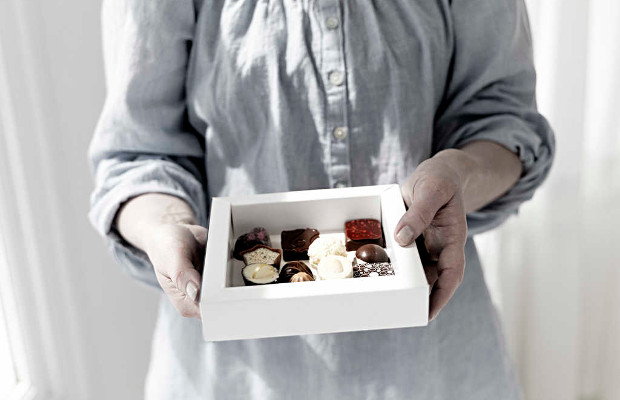Cartonboard

Case - Published 4.7.2014
Did you know: one cubic metre of wood is enough to make 20,000 paperback covers or 10,000 chocolate boxes?
When you open your kitchen cupboard, you see cereal, tea and biscuits, maybe even chocolate. Other cupboards might contain medicines, makeup and perfumes. All these products are packaged with cartonboard.
When you buy chocolate, you probably don’t want it to taste like anything but chocolate? Cartonboard made from fresh forest fibre will not transfer any odour or taint to the chocolate, or any other food for that matter. Nor will it impart any harmful compounds to the food. Fresh forest fibres are also a renewable natural resource. Cartonboard made from fresh forest fibres is recyclable and an excellent raw material for recycled products.
Cartonboard is also strong, and the packaging will protect the product across its journey from the manufacturer to the store and into your home. Nobody wants broken chocolate packs, and these are often left on the shelves and end up in waste. That is why it is important to use cartonboard that is strong enough to protect the product. This means less food waste, as food products end up where they are supposed to – in your tummy.
When the cartonboard is as lightweight as possible, the production process requires the smallest amount of raw materials and energy. Cartonboard packaging is also lighter to transport from the manufacturer to the store. Packaging made from light cartonboard also means that it ultimately produces less waste than packaging made with heavier board.
The Brunberg truffle box provided in the portfolio is made from Simcote cartonboard of Metsä Board, which is manufactured at the Simpele mill in Eastern Finland.
Text and photos are from the info cards in the presentation briefcase on the Finnish forest sector. The idea of a briefcase with various kinds of samples to present this diverse sector came from the young people themselves. The briefcase has been handed out at visits to upper secondary schools.
More information on the briefcase and visits: vilma.issakainen(@)smy.fi and anne.kettunen(@)forestindustries.fi.
